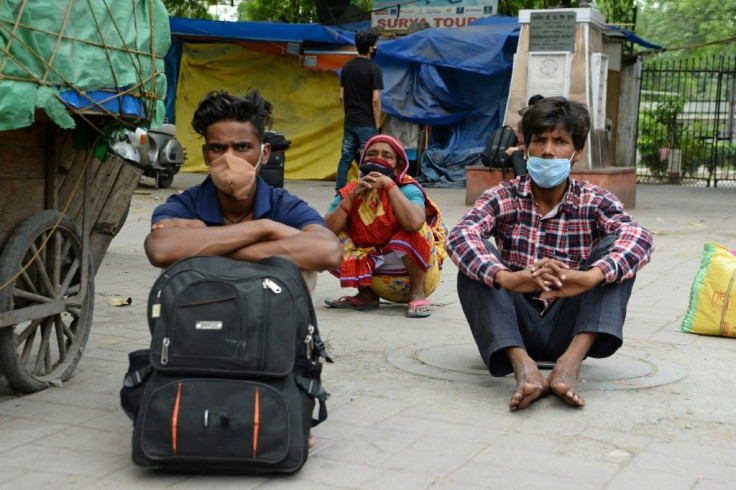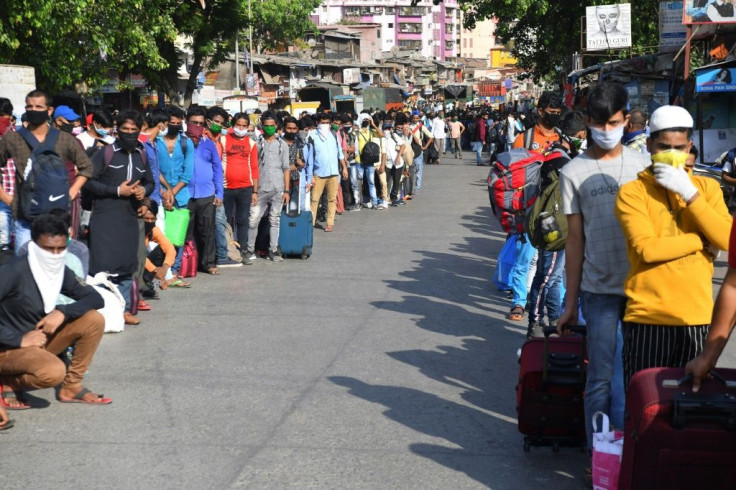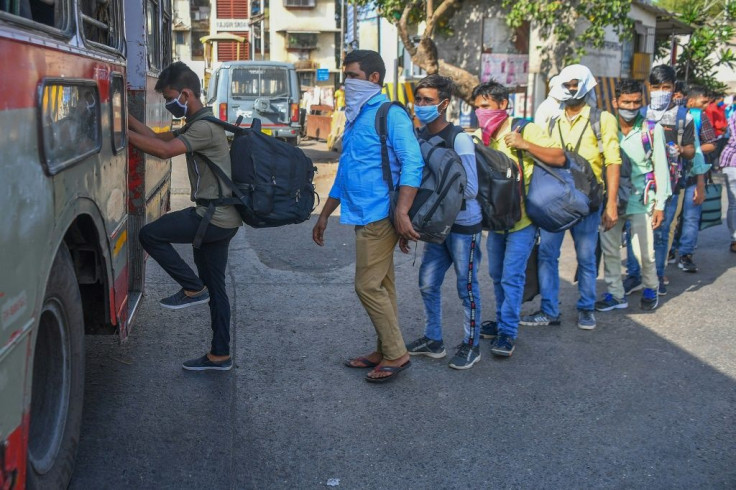Indian Trains Start Rolling Again Despite Virus Surge
India's enormous railway network tentatively ground back to life Tuesday as a gradual lifting of the world's biggest coronavirus lockdown gathered pace even as new cases surged.
The country of 1.3 billion imposed a strict shutdown in late March, which Prime Minister Narendra Modi's government has credited with keeping cases to a modest 70,000, with around 2,300 deaths.
But the lockdown, which enters its 50th day on Wednesday, has torpedoed the economy, snatching the livelihoods of tens of millions of people and hitting the poor the hardest.

Whole industries have been devastated from tea plantations to diamond-polishing and there are fears of food shortages, while a ban on flights has left hundreds of thousands of Indians stranded abroad.
Restrictions have been steadily eased, however, particularly in rural areas, and some Indian trains -- on a network which normally carries over 20 million passengers a day -- resumed on Tuesday.
More than 54,000 tickets for an initial 30 services sold out online within three hours on Monday, reports said.
Two trains left New Delhi on Tuesday afternoon with 2,300 people on board. Others left different cities including Mumbai.

The government has not set out a programme for a timetable beyond May 20.
There were limited special train services laid on after the lockdown was imposed to ferry home some of the millions of poor migrant workers left jobless and destitute by the shutdown.
Many people, however, were forced to walk hundreds of miles (kilometres) to get home. Some died on the way, including 14 workers crushed by a goods train in Maharashtra last week.

Passengers in face masks or with handkerchiefs over their mouths queued outside New Delhi station on Tuesday, waiting to be screened for coronavirus symptoms.
Ajay Dewani, a photographer stranded in Ghaziabad with a ticket for Chattisgarh state said he walked for four hours to get to the station.
"I haven't been paid for two months and my landlord was hassling us for rent," he told AFP, carrying a backpack and pulling a wheeled suitcase.
But Usha, a labourer from Madhya Pradesh state, said she, her husband and their two children were turned away because they had no ticket.

"We came here to the railway station as we were told that the trains will start working from May 12," she told AFP.
"Where do we go now? We have no money to buy something to eat."
On Monday Modi held a video conference to discuss further relaxation of the lockdown when it ends on May 17 with state chief ministers.
Some reportedly were critical of the measures being eased.
In an address to the nation late Tuesday, Modi said further announcements about changes to the lockdown, which is due to lift on May 18, would be revealed in coming days.
He added that the lockdown, which has already been extended twice, "will be different in many ways" and have "new rules and regulations" as he announced a stimulus package worth US$266 billion to boost the struggling economy.
The number of cases is still rising in India, with more than 3,600 new infections recorded on Monday -- just below Sunday's record of more than 4,000.
Major cities including Delhi, Ahmedabad and Mumbai -- home to the Dharavi slum area -- have been worst hit by the new surge, and health specialists say infections may only peak in June or July.
Experts say India has not been testing enough of its population and has to be ready for a rise in cases.
"I am sure the government is making the decisions based on data. There is nothing in the public domain that gives us confidence," said Shahid Jameel, who heads the Wellcome Trust/DBT India Alliance.
"But on the other hand if we don't start opening up, more people will die of hunger than COVID," Jameel told AFP.
© Copyright AFP 2024. All rights reserved.





















